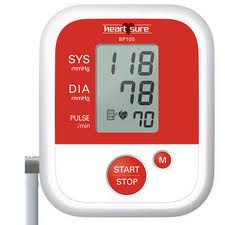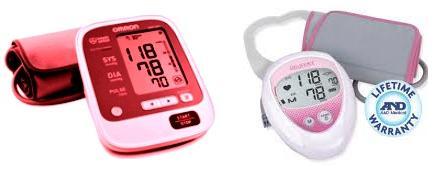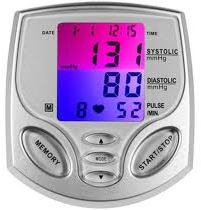Home Blood Pressure Monitors

Home blood pressure monitors are a good idea if
you have high blood pressure or are concerned about your health. There are a few good reasons for using one:
1) They are a good way to start taking charge of your own health. You can see a trend in your blood pressure readings (up or down) over time and take action to change it if necessary and
2)You can provide the readings to your GP to help him monitor your condition and assist him with determining your medication dosage.
3) Getting one or two readings in a doctor’s surgery will not be as
accurate as taking your own blood pressure a few times every day over a month.
4) ’White coat hypertension’ can produce blood pressure readings higher than usual. This is because some people (up to 20% of the population) get nervous when they visit the doctor and this raises their blood pressure. If you are relaxed and in your home environment, taking the readings yourself, then you are more likely to get a more accurate reading. This means you are less likely to be prescribed medication for your ‘high’ blood pressure in the doctor’s office.
Types of home blood pressure monitors
There are aneroid and digital home blood pressure monitors. The aneroid ones are like the one your doctor uses and include a stethoscope. Although cheaper than digital they are not as easy to use as the digital ones. I suggest that you consider buying a digital monitor.
The digital ones include upper-arm and wrist type models. They also have either an automatically inflating cuff (the piece that goes round your arm or wrist) or a manual cuff where you pump the cuff up by squeezing a bulb. Digital monitors are the most popular for home use and range in price from $30 to $200 depending on the features.
Buying home blood pressure monitors
1) It is easy to shop on line and I make a few suggestions below as to the best monitors to buy
2) Measure your cuff size first before you go shopping. Choosing the wrong cuff size can result in inaccurate readings
3) Choose a monitor that has a large enough display so you can easily read your blood pressure numbers
4) Check that their accuracy meets or exceeds the standards set by the AAMI (Association for the advancement of Medical Instrumentation)
Most popular home blood pressure monitors
The two most popular brands of home blood pressure monitors are Omron and Lifesource (from A&D medical) and by clicking on the links you can check out both companies to compare features and prices

Before you measure your blood pressure
- Caffeine, alcohol and tobacco will affect your blood pressure. Wait at least 30 minutes after consuming them before you check your blood pressure.
- Try and urinate before checking blood pressure so that your bladder is empty
- Sit quietly in a comfortable position with arms and legs uncrossed for 5 minutes without talking before you check your readings
Using home blood pressure monitors
- Your left arm should be placed on a desk or table at the level of your heart. Blood pressure varies between the right and left arm so use the left arm every time for consistency in readings.
- Then wrap the cuff around your bicep (upper arm). It should be tight enough that only a fingertip can slip under the cuff and make sure that the bottom edge of the cuff is at least 1 inch (2.5 cm) above the crease of your elbow
- Have a pen ready to record your blood pressure readings if you want a written record but most of the monitors are able to store your readings in memory
- Once the cuff is around your arm and fitted correctly turn on the machine. In an automatic model the cuff will inflate when you push a button. Manual models require you to pump up the cuff using a rubber bulb that you squeeze. After inflation the cuff will slowly lose pressure automatically.
- Check the display. The monitor will show your systolic and diastolic pressures. Write them down (or store them in the unit’s memory), systolic over diastolic, e.g. 120/80 On some monitors you will press the exhaust button to allow the cuff to release and on others the cuff releases automatically once the reading is done.
- If you want to check your readings a second time, wait 3 minutes before repeating the procedure.

Once you have your reading you can check it on my blood pressure chart page here to see where you stand
Leave home blood pressure monitors page and go to Blood Pressure Chart page